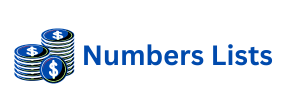Understanding Modern Content Writing Topics
Content writing has dramatically evolved. It moves beyond simple keyword stuffing. Effective content now serves user intent. Search engines prioritize relevance and depth. Understanding this shift is crucial for digital success. Semantic SEO represents this new paradigm. It focuses on topic authority and comprehensive coverage. Your content must answer user questions thoroughly. This approach builds trust with users and search engines. It ensures your message resonates deeply.
Modern strategies embrace broad topics. They explore related concepts and entities. This holistic view improves search visibility. It offers more value to your readers. Crafting compelling content requires deep understanding. You must know your audience’s needs. Only then create truly impactful pieces. Semantic SEO guides this process. It helps structure information logically. This makes your content easier to consume. It also aids in better search ranking. Quality content attracts valuable traffic. It establishes you as an industry expert. Embrace semantic content for a stronger online presence.
Key Principles of Semantic SEO for Content Writers
Semantic SEO moves beyond individual keywords. It focuses on the meaning behind queries. Search engines understand concepts and relationships. They analyze entities within your content. An entity is a person, place, or thing. Google connects these entities to form knowledge graphs. This helps interpret complex search queries. Your content must reflect this understanding. It should cover a topic comprehensively. Include related terms naturally. This demonstrates deep topical authority.
Building topical authority is vital. It signals expertise to search engines. Cover subtopics extensively. Address all angles of your core subject. This makes your content an ultimate resource. Google rewards such in-depth coverage. It views your site as more trustworthy. Readers also benefit from complete answers. This reduces bounce rates and increases engagement. A well-structured content strategy is key. Understanding search intent is paramount. Tailor your content to match this intent. Semantic analysis helps uncover true intentions. This approach creates truly effective content.
Crafting Semantically Rich Content Writing Topics
When writing content, think broadly. Consider all related keywords. Use latent semantic indexing (LSI) keywords naturally. These terms associate closely with your main topic. They enrich your content’s context. Avoid forcing keywords unnaturally. Focus on clear and coherent writing. Your primary goal is always the reader. Search engines reward good user experience. Readability remains a top priority. Every word matters for clarity and impact.
Structure your content with clear headings. Use H2, H3, H4, and so on. This creates a logical flow. It helps search engines understand content hierarchy. It makes your content scannable for readers. Each heading should introduce a new concept. Keep paragraphs concise and focused. Break up long blocks of text. Short sentences improve comprehension. Aim for an easy reading level. This broadens your audience reach. Prioritize natural language processing. Semantic optimization integrates seamlessly. It should not feel forced or artificial. Focus on delivering genuine value.
Leveraging Entity Optimization in Content Writing
Entity optimization is a sophisticated approach. It involves clearly defining key entities. These are the core subjects of your content. Ensure they are unambiguously presented. Use consistent terminology throughout your article. This helps search engines link your content. It connects to their vast knowledge graphs. Accurate representation strengthens your authority. Factual correctness is absolutely essential. Incorrect entities can harm your credibility significantly.
To identify relevant entities, research extensively. Look at what top-ranking pages cover. What related concepts do they frequently mention? Use tools to analyze entity relationships. Google’s own search results offer clues. Examine the “People also ask” section. Check the related searches suggestions. These insights guide your content creation. They help build a comprehensive entity map. This ensures holistic topic coverage. It elevates your content’s semantic depth. Embrace entity optimization for superior results.
Measuring Success for Semantic Content Writing Topics
Creating semantic content is an ongoing process. You must measure its performance. Use analytics to track key metrics. Look at organic traffic and rankings. Evaluate user engagement signals closely. This includes time on page. It also includes bounce rate. High engagement indicates relevance. Low bounce rates show user satisfaction. These metrics offer valuable insights. They tell if your content truly resonates. Adjust your strategy based on this data. Continuous improvement is essential always.
Monitor your target keywords and topics. Are you gaining visibility for them? Check related queries in search console. Discover new opportunities for expansion. User feedback is also invaluable. Listen to comments and questions from readers. This can reveal content gaps. It might point to areas needing clarification. Update your content regularly. Keep it fresh, accurate, and comprehensive. Outdated information hurts your authority. Semantic SEO thrives on freshness. It requires constant attention and care. It builds authority over time. Investing in semantic content pays dividends. It secures your digital future effectively.
